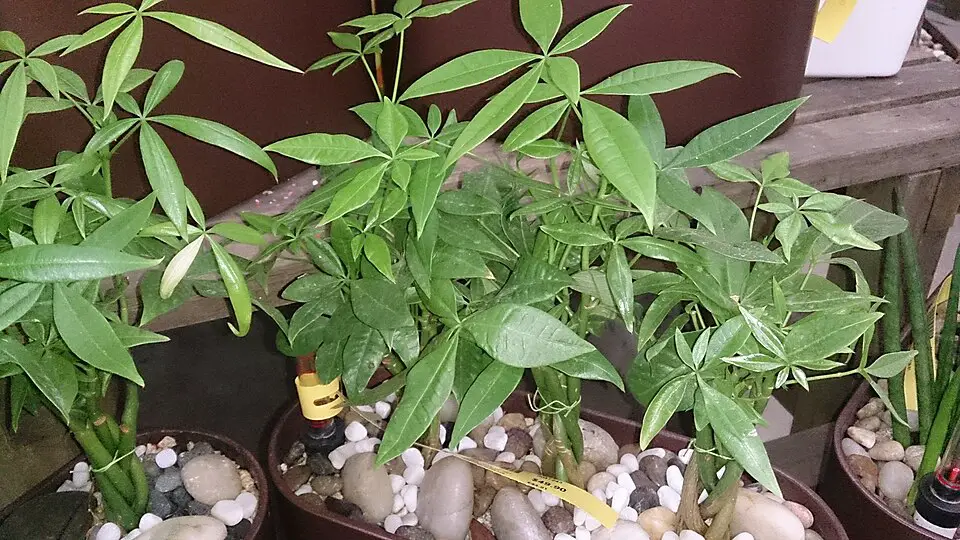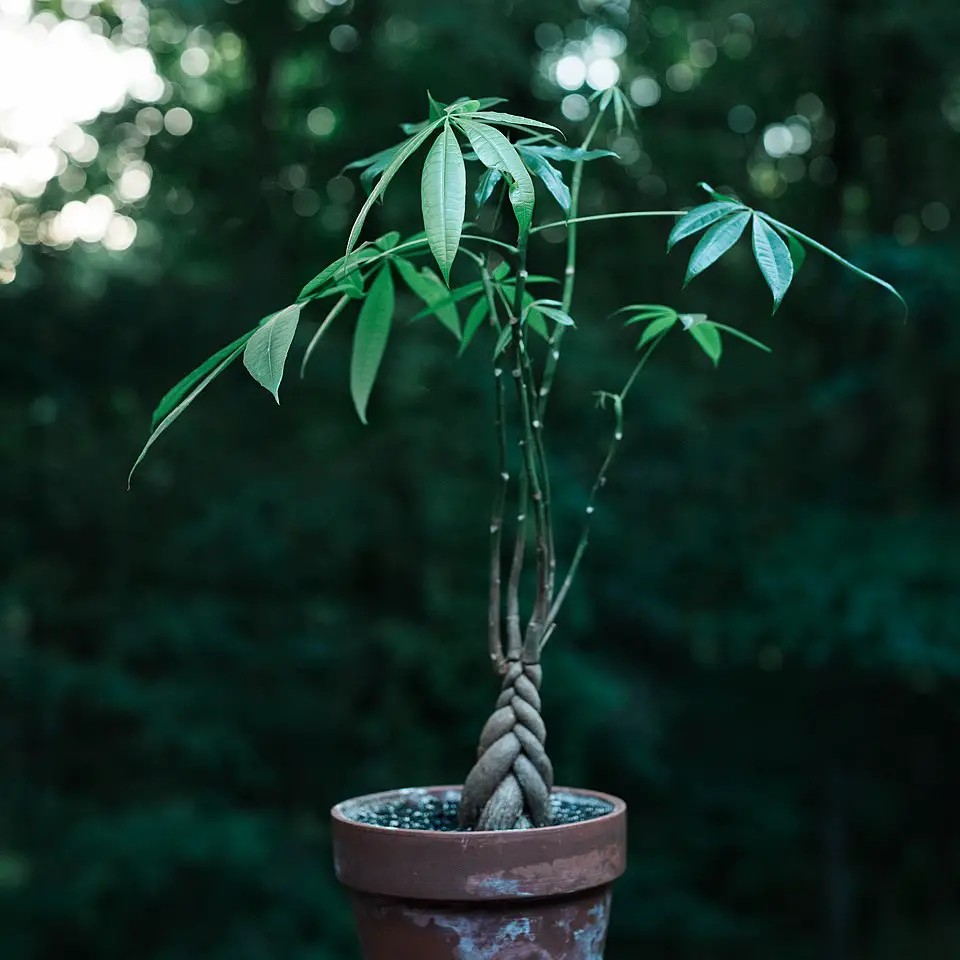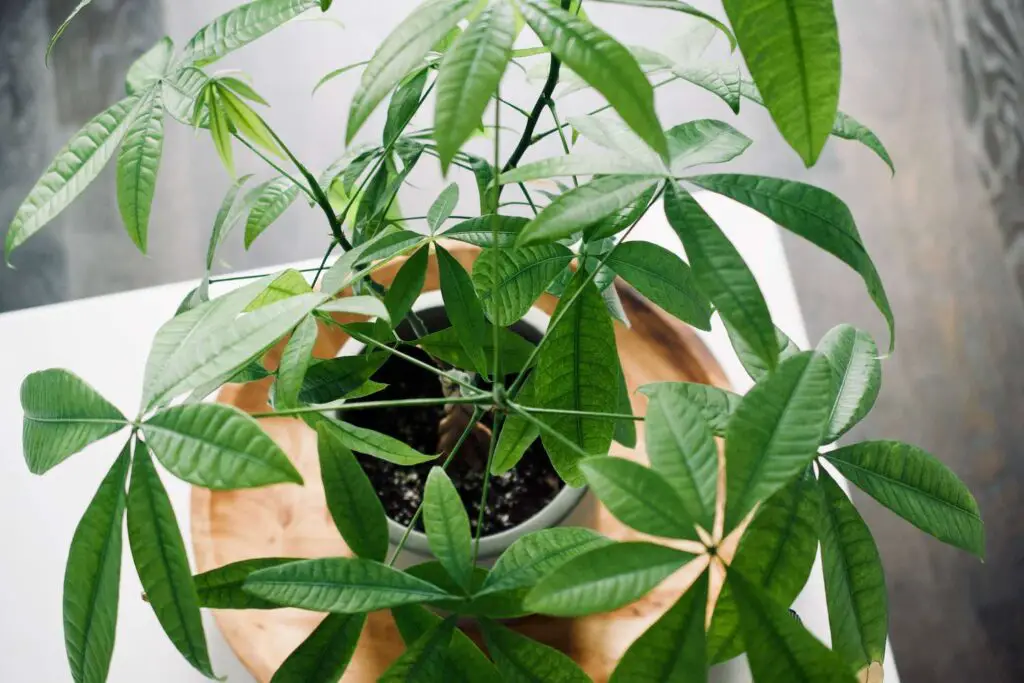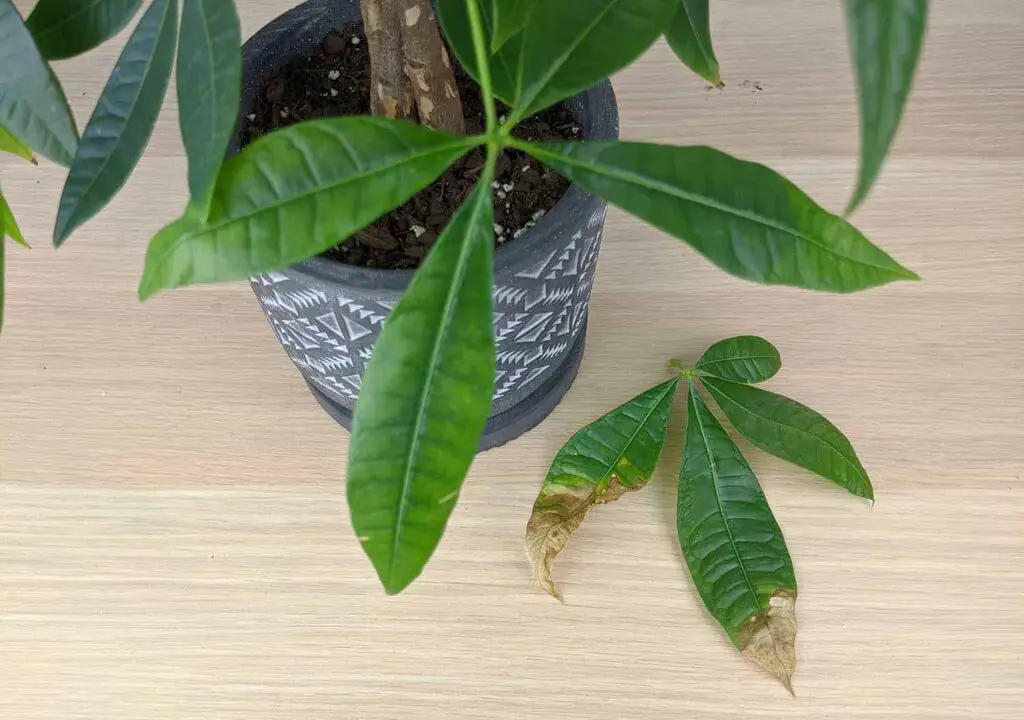Yellow leaves on a Money Tree usually indicate overwatering, underwatering, or nutrient deficiency. To fix this, adjust your watering routine, check for pests, and consider fertilizing your plant.
Understanding the Money Tree
The Money Tree, scientifically known as Pachira aquatica, is a popular houseplant recognized for its braided trunk and lush green leaves. Native to Central and South America, this plant is often associated with good luck and prosperity. It thrives in well-draining soil and prefers bright, indirect sunlight. Despite its reputation for being low-maintenance, it can exhibit signs of distress, such as yellowing leaves.

Identifying the cause of yellow leaves is essential for maintaining a healthy Money Tree. The symptoms can stem from various issues, including environmental factors, care mistakes, or pest infestations. Understanding these factors is crucial for effective treatment.
Common Causes of Yellow Leaves
There are several reasons why your Money Tree might develop yellow leaves. Here are some of the most common causes:
- Overwatering: Waterlogged soil can lead to root rot, causing the leaves to turn yellow.
- Underwatering: Insufficient water can also stress the plant, leading to yellowing leaves.
- Insufficient Light: Money Trees need bright, indirect sunlight. Too little light can cause leaves to yellow and drop.
- Nutrient Deficiency: A lack of essential nutrients can lead to poor leaf health.
- Pest Infestation: Insects like spider mites and aphids may attack the plant, causing stress and discoloration.
Diagnosing the Issue
To effectively address yellow leaves on your Money Tree, you first need to diagnose the underlying problem. Start by assessing your plant’s current conditions. Here are some steps to follow:

- Check the Soil: Gently remove the plant from its pot to inspect the root system. If the roots are dark and mushy, overwatering is likely the issue.
- Evaluate Watering Schedule: Consider how often you water your Money Tree. Ensure you are neither underwatering nor overwatering.
- Inspect Light Conditions: Observe where your plant is placed. It should be in a location that receives plenty of indirect sunlight.
- Look for Pests: Examine the leaves and stems for any visible signs of pests. Look for webbing or tiny insects.
Steps to Fix Yellow Leaves
Once you have diagnosed the problem, you can take steps to remedy the situation. Here are some effective strategies:
| Problem | Solution |
|---|---|
| Overwatering | Allow soil to dry out completely before watering again. Ensure proper drainage. |
| Underwatering | Water thoroughly until excess drains out. Maintain consistent moisture levels. |
| Insufficient Light | Move the plant to a brighter location with indirect sunlight. |
| Nutrient Deficiency | Fertilize with a balanced houseplant fertilizer every month during the growing season. |
| Pest Infestation | Treat with insecticidal soap or neem oil to eliminate pests. |
By following these steps and addressing the specific issues causing yellow leaves, you can help restore your Money Tree’s health and vitality.
Preventing Yellow Leaves in Money Trees
Prevention is always better than cure, especially when it comes to maintaining the health of your Money Tree. Understanding the right care practices can help keep your plant vibrant and prevent yellow leaves from appearing in the first place.

Optimal Watering Techniques
Watering is one of the most critical aspects of Money Tree care. Here are some tips to ensure you are watering correctly:
- Check the Soil Moisture: Before watering, stick your finger about an inch into the soil. If it feels dry, it’s time to water.
- Use Proper Drainage: Ensure your pot has drainage holes. This helps prevent water from accumulating at the bottom, which can lead to root rot.
- Water Thoroughly: When you water, do so until you see excess water draining from the pot. This ensures that the roots get enough moisture.
Lighting Conditions
The right amount of light is essential for your Money Tree’s health. Here are some guidelines to follow:
- Avoid Direct Sunlight: While Money Trees enjoy bright light, direct sunlight can scorch their leaves, leading to yellowing.
- Rotate Your Plant: If your Money Tree tends to lean toward the light, rotate it every few weeks to promote even growth.
- Use Supplemental Lighting: If natural light is limited, consider using grow lights to provide adequate illumination.
Maintaining Optimal Humidity
Money Trees thrive in humidity levels of around 40-60%. Low humidity can cause stress, leading to yellow leaves. Here are some ways to maintain humidity:
- Humidity Tray: Place a shallow tray filled with water and pebbles beneath the pot. As the water evaporates, it will increase humidity around the plant.
- Misting: Lightly misting the leaves can help maintain humidity. However, avoid overdoing it, as excessive moisture can lead to fungal issues.
- Use a Humidifier: In dry environments, using a humidifier can help create a more suitable atmosphere for your Money Tree.
Nutrient Management
Providing your Money Tree with the right nutrients is vital for its overall health. Here are some best practices for nutrient management:

Selecting the Right Fertilizer
Choosing a balanced fertilizer can make a significant difference. Consider these points:
- Use Balanced Fertilizer: Select a fertilizer with an equal ratio of nitrogen, phosphorus, and potassium (NPK). A ratio of 10-10-10 works well for Money Trees.
- Fertilize During Growing Season: Apply fertilizer every month from spring to early fall when your plant is actively growing.
- Avoid Over-Fertilizing: Too much fertilizer can lead to salt buildup and root damage. Follow the recommended dosage on the fertilizer package.
Signs of Nutrient Deficiency
It’s essential to recognize signs of nutrient deficiency early. Here are some symptoms to look out for:
- Yellowing Leaves: This may indicate a nitrogen deficiency.
- Pale New Growth: New leaves may appear pale or stunted due to lack of nutrients.
- Browning Leaf Edges: Browning can be a sign of potassium deficiency or salt buildup from over-fertilization.
Pest Management Strategies
Pests can significantly impact your Money Tree’s health. Regular monitoring and prompt action can help protect your plant. Here are some strategies:
- Inspect Regularly: Check your plant weekly for any signs of pests like spider mites or aphids.
- Clean Leaves: Wipe down leaves with a damp cloth to remove dust and potential pests.
- Natural Remedies: Use neem oil or insecticidal soap as a preventative measure against pests.
By following these care guidelines, you can create a nurturing environment for your Money Tree and significantly reduce the chances of yellow leaves appearing in the future.
Repotting Your Money Tree
Repotting can be an essential part of maintaining a healthy Money Tree. Over time, plants can outgrow their containers, leading to root crowding or nutrient depletion in the soil. Understanding when and how to repot your Money Tree can help prevent yellow leaves and promote overall health.
When to Repot
Knowing the right time to repot your Money Tree is crucial. Here are some signs that indicate it may be time for a change:
- Root Bound: If roots are growing out of the drainage holes or circling around the root ball, it may be time to repot.
- Soil Degradation: If the soil appears compacted or is not retaining moisture well, it may need refreshing.
- Stunted Growth: If your Money Tree has stopped growing or is producing smaller leaves, it could be due to limited space for root growth.
How to Repot
Repotting should be done carefully to minimize stress on the plant. Follow these steps for a successful repotting:
- Select a New Pot: Choose a pot that is one size larger than the current one. Ensure it has drainage holes.
- Prepare Fresh Soil: Use a well-draining potting mix suitable for indoor plants. A mix containing peat, perlite, and pine bark works well for Money Trees.
- Remove the Plant: Gently take the Money Tree out of its current pot. Be careful not to damage the roots.
- Inspect Roots: Check for any signs of rot or damage. Trim away any unhealthy roots with clean scissors.
- Place in New Pot: Fill the new pot with fresh soil and position your Money Tree in the center. Fill around the roots with more soil, leaving some space at the top.
- Water Thoroughly: After repotting, water the plant until you see excess water draining from the bottom.
Common Mistakes to Avoid
Caring for a Money Tree can be straightforward, but there are common pitfalls that can lead to yellow leaves. Here are some mistakes to watch for:
- Ignoring Drainage: Always ensure your pot has drainage holes. Poor drainage can lead to overwatering and root rot.
- Overlooking Light Needs: Placing the plant in direct sunlight can scorch the leaves. Ensure it receives bright, indirect light instead.
- Inconsistent Watering: Establish a regular watering schedule. Inconsistent moisture levels can stress the plant.
- Neglecting Pest Control: Failing to check for pests regularly can lead to infestations that harm your plant.
Seasonal Care Adjustments
Your Money Tree’s care needs may change with the seasons. Understanding these adjustments can help maintain its health throughout the year.
Spring and Summer Care
The growing season for Money Trees typically begins in spring and lasts through summer. Here are some tips for these seasons:
- Increase Watering: As temperatures rise and growth increases, you may need to water more frequently.
- Add Fertilizer: Fertilize monthly during these months to support active growth.
- Watch for Pests: Increased warmth can lead to pest activity. Regularly inspect your plant.
Fall and Winter Care
<pDuring fall and winter, your Money Tree may enter a dormant phase. Adjust your care routine accordingly:
- Reduce Watering: Water less frequently, as plants require less moisture during dormancy.
- Avoid Fertilizing: Hold off on fertilization until spring, as growth will slow significantly.
- Provide Adequate Light: Ensure your plant gets enough light, as days become shorter. Consider moving it closer to a light source if needed.
By understanding the seasonal needs of your Money Tree and avoiding common mistakes, you can help ensure its health and vitality, minimizing the risk of yellow leaves appearing in the future.
Additional Tips for Healthy Money Trees
>In addition to the previously discussed care practices, there are some extra tips that can help you maintain a healthy Money Tree and reduce the likelihood of yellow leaves. Paying attention to these details can enhance your plant’s well-being.
Environmental Factors
Creating the right environment for your Money Tree is essential. Here are some factors to consider:
- Temperature: Money Trees prefer temperatures between 65°F and 80°F (18°C to 27°C). Avoid exposing them to cold drafts or sudden temperature changes.
- Air Circulation: Ensure good air circulation around your plant. This helps prevent fungal diseases and pests.
- Placement: Keep your Money Tree away from heating vents or air conditioning units, as extreme fluctuations in temperature can cause stress.
Regular Maintenance
Routine maintenance can significantly affect your Money Tree’s health. Here are some maintenance tasks to keep in mind:
- Pruning: Regularly prune any dead or yellowing leaves to encourage new growth and improve air circulation.
- Cleaning: Dust the leaves with a damp cloth to keep them clean and allow for optimal photosynthesis.
- Monitoring Growth: Keep an eye on your plant’s growth patterns and overall health. Early detection of problems can lead to quicker resolutions.
Enhancing Soil Quality
The quality of the soil used for your Money Tree plays a significant role in its health. Here are some considerations for maintaining soil quality:
- Soil Type: Use a mix designed for houseplants or create your own with equal parts peat, perlite, and pine bark.
- Aeration: Ensure that the soil remains aerated. If it becomes compacted, consider mixing in additional perlite or pumice.
- Soil Replacement: If you notice persistent issues with yellow leaves, it may be time to replace the old soil completely during repotting.
Understanding Yellow Leaves in Context
Whi
le yellow leaves can be alarming, they are often a sign that your Money Tree needs attention. Recognizing the context in which yellowing occurs can help you address issues more effectively:
- Seasonal Changes: Understand that yellow leaves may be more common during seasonal transitions, especially if light and temperature conditions change significantly.
- Plant Age: Older plants may naturally shed leaves as part of their growth cycle. A few yellow leaves may not always indicate a problem.
- Stress Factors: Consider any recent changes in environment or care routine that may have stressed your plant.
Final Thoughts
Caring for a Money Tree involves understanding its specific needs and responding accordingly. By being attentive to watering habits, light conditions, humidity levels, pest management, and seasonal adjustments, you can help ensure your Money Tree thrives. Remember that yellow leaves are often an early warning sign that something is amiss, allowing you the opportunity to correct it before further damage occurs.
Maintaining a healthy Money Tree requires consistent effort and observation. With the right care practices, you can enjoy the beauty and symbolic fortune this plant brings without the worry of yellowing leaves. Embrace the journey of nurturing your Money Tree, and it will reward you with lush foliage and prosperity for years to come.
Your commitment to understanding and addressing the needs of your Money Tree will not only improve its health but also enhance your experience as a plant parent. Happy gardening!
